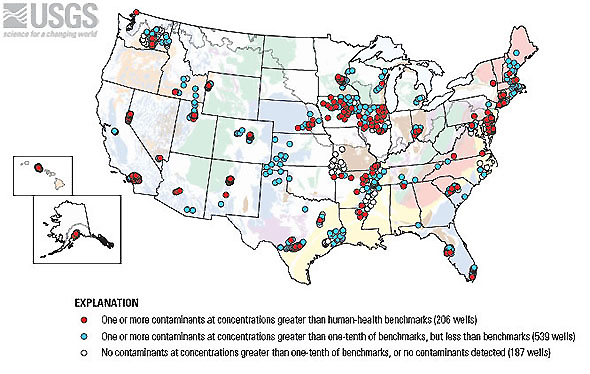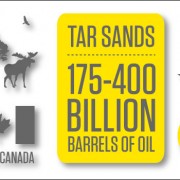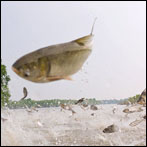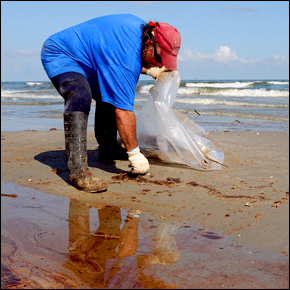USGS Survey Finds Contamination in Public Wells
A new study reveals that untreated water from public wells that serve 105 million Americans is contaminated, but further research is needed to explain the health effects of specific contaminants.

By Heather Rousseau
Circle of Blue
More than one-third of the U.S. population uses drinking water from contaminated public wells, according to a 14-year-long study by the U.S. Geological Survey that was released late last week. The study, Quality of Water from Public-Supply Wells in the United States, which compiled untreated water samples that were taken between 1993 and 2007, found that 20 percent of the public wells surveyed contained at least one natural or man-made contaminant above standard concentrations.
Roughly 80 percent of the wells contained multiple contaminants at concentration levels that were near or above standards. But these levels don’t necessarily cause health concerns, according to one USGS scientist.
“Detections of contaminants does not necessarily indicate a concern for human health because USGS analytical methods can detect many contaminants at concentrations that are 100-fold to 1,000-fold lower than human-health benchmarks,” said Patricia Toccalino, a lead scientists and hydrologist for USGS.
“Assessing contaminants in these small amounts helps to track emerging issues in our water resources and to identify contaminants that may warrant inclusion in future monitoring,” Toccalino told Circle of Blue.
Dieldrin was found at levels that exceed the health benchmarks set by USGS and the U.S. Environmental Protection Agency in roughly three percent of the samples taken. The unregulated man-made contaminant is a potential carcinogen that can have negative effects on a person’s liver and central nervous system if he is exposed to it at high concentrations for a long period of time. Of the 932 wells USGS sampled, higher levels were found in unconfined and shallow aquifers in the Northern Atlantic and coastal plains such as Delaware and New York as well as other principal aquifers in the Southeast U.S.
The EPA evaluated Dieldrin and determined that it should not be regulated “in part because it has been banned for a long time” says Patricia Toccalino, lead scientist and Hydrologist with USGS.
Although the unregulated, man-made contaminant was banned in 1987, it degrades slowly, which might be one reason why it’s still detected, according to Toccalino.
Though it is not required that utility services treat the water for Dieldrin, it is possible that different treatment facilities do remove the insecticide.
“The research about the health risk of trace amounts of contaminants in water is something that is still being researched. Public water systems are required to treat contaminated water under the Safe Drinking Water Act, if you do that it dramatically reduces the health risks, “ said Cliff Treyens, public awareness director for the National Groundwater Association.
A smaller study on treated drinking water revealed that man-made organic contaminants were still found in the water at close to pre-treatment levels. Research does not yet fully explain the health risks involved with interactions between multiple contaminants or the health effects on even a single contaminant.
Until further research is done, Toccalino said the public should approach their water utility for the best available information.
“The number one thing is to contact your water utility every year to receive your watery quality report.”
Heather Rousseau is a reporter for Circle of Blue. Read more about USGS’ study. The graphic tools were compiled by reporter Aubrey Parker. Reach Rousseau and Parker at circleofblue.org/contact









Leave a Reply
Want to join the discussion?Feel free to contribute!